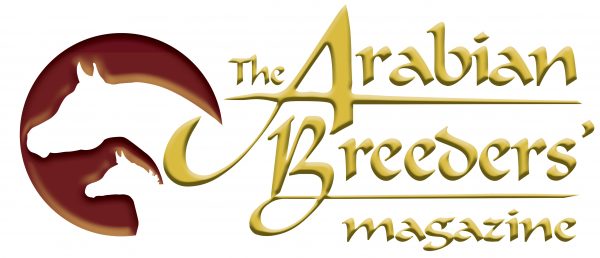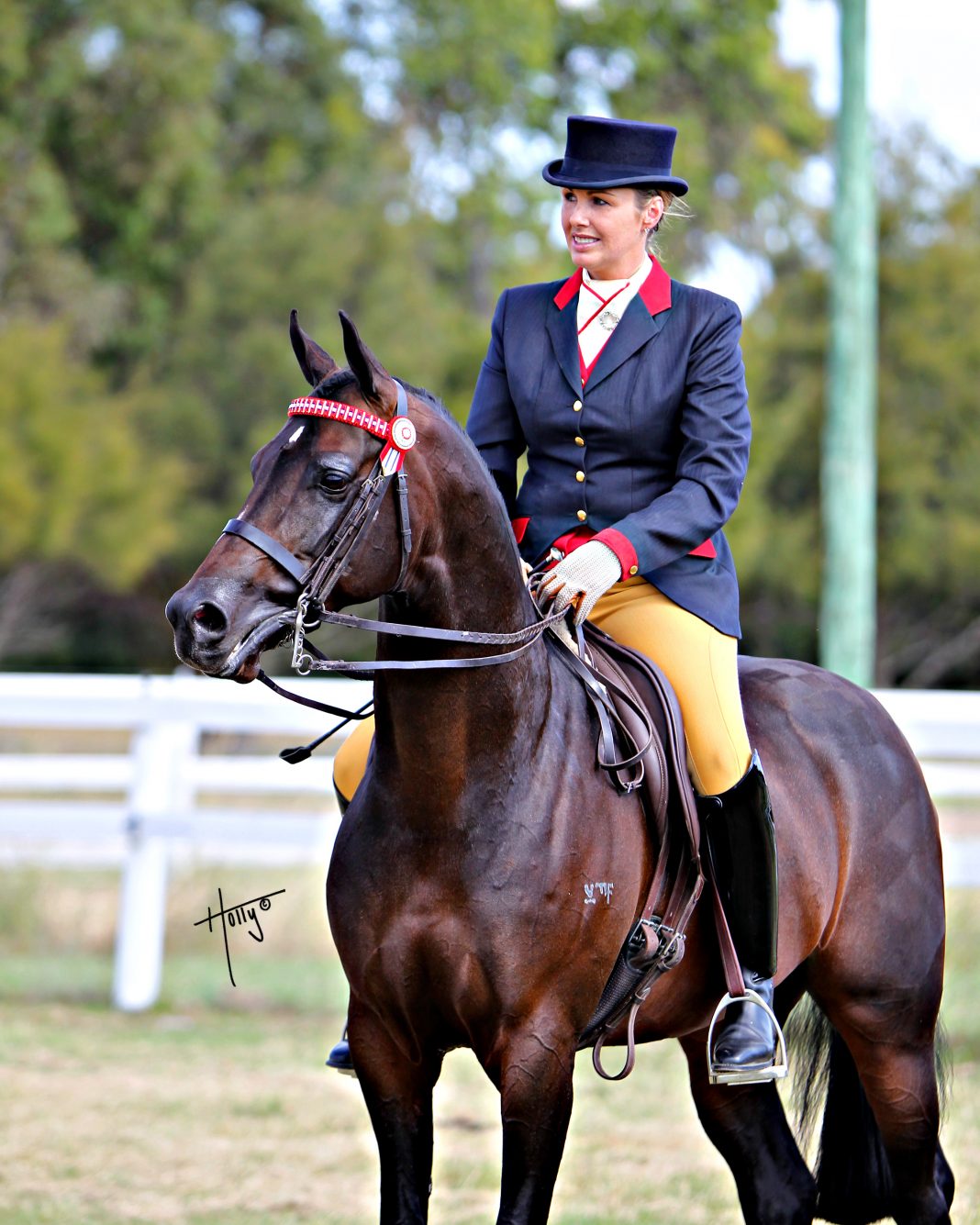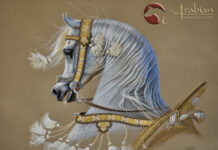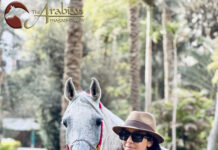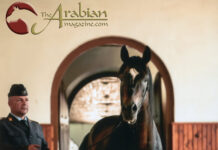The Breeders Interview – Future Farms, Australia
In every edition of The Arabian Breeders’ Magazine, we speak to a selection of breeders from around the world about their experiences and successes with their breeding programme. We are delighted to share some of these incredibly insightful features online.
The Arabian Breeders’ Magazine (TABM): Please share with our readers a short background of your farm.
Doyle Dertell, Future Farms, Australia: My wife, Kate, and I have been breeding horses at Future Farms for 20 years. Prior to that, we both came from family breeding programmes, Kate here in Australia and myself from Canada. We have always bred a selection of purebred Arabians and derivatives or part-breds. We both come from a strong performance and working horse background. We have had a lot of success with our breeding horses and have been able to achieve multiple Australian Champions every year, and have been blessed with many of our horses doing well on the world stage via export in multiple divisions including halter, show saddle, endurance, and flat racing.
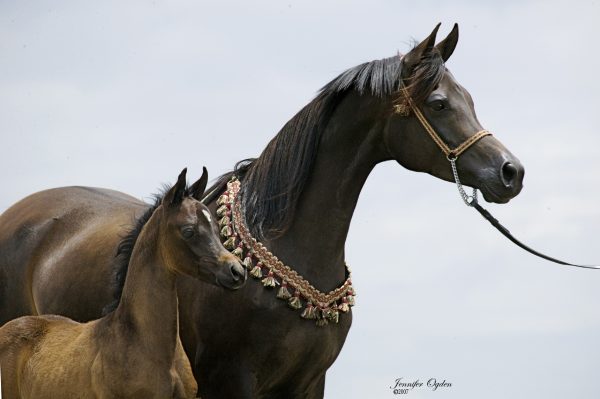
Bremervale Charmed. Credit Jennifer Ogden.
TABM: What have been the bloodlines that you have focused on, and why did you choose them? Has this focus changed over the years?
Doyle: To be honest, our journey has developed not specially on bloodlines but early on finding the best mares that we could to start our programme. It is more of a phenotype programme than a genetic programme. Sure, there have been particular horses that have influenced our style of Arabian, and we were always keen to find those horses we liked which had these horses in their pedigree.
For the first 10 years, we bought or leased the best mares we could and bred them to the best stallions we had access to in order to keep improving the product towards our vision of a complete Arabian.
In the past 10 years, the most influential horse we have had who is now ingrained in our programme – and makes our programme unique to anywhere else in the world – is our homebred, stallion CraveFF (Mash x Bremervale Charmed). CraveFF has proven to be a real breeding stallion, stamping his look on almost every single mare he has been across. It would be safe to say that he would be one of the highest-producing National Champion stallions in the world as he has not only crossed so well with purebreds, but he also excels with the derivative/part-breds.
In terms of where we are at today, our focus is still the same. We are looking to improve every generation that comes along. We now have a great broodmare band and our focus is now more towards finding the next stallion each couple of years to complement the mares rather than still going out looking for more females.
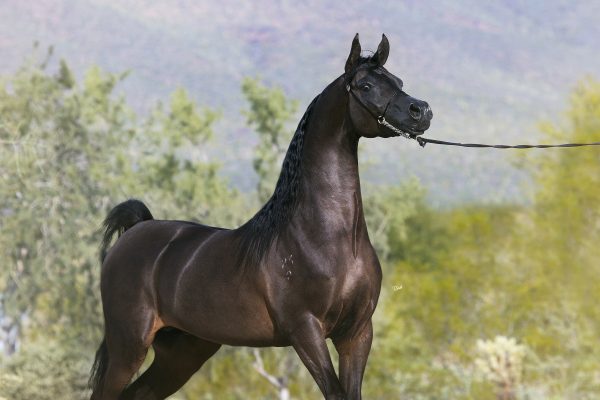
Sir Charmed FF. Credit Renato Sorvillo.
TABM: What were your breeding goals when you first started? Have they changed over the years?
Doyle: Our breeding goals have always been the same. To produce beautiful, functional, well-mannered horses that can do multiple things!
TABM: Please share key moments that stand out in the early stages of your breeding programme?
Doyle: Simple – breeding CraveFF and showing through his youth, then watching his fan base grow. To then see him turn into an influential breeding stallion has been a life changing event for our farm
TABM: When was it that you realised that you were a successful breeder? And what, in your opinion, defines a ‘breeder’?
Doyle: A successful breeder? That’s a question to ask our peers, but we are happy that we have people that want to purchase our horses to include them into their own programmes.
What I believe defines a breeder is someone that produces numbers of foals with an independent personal goal in mind and is not guided by fashion. What defines a successful breeder is ones with that goal, but also is able to continue to have their horses influence other programmes.
TABM: As a breeder, how do you feel about the showing world? Do you think that changes are needed to celebrate breeders more?
Doyle: It would be nice to see breeders celebrated more for sure. It is easy to go buy high quality horses – it’s another thing to breed them. We require both parties to make the industry successful, but without the quality horses, where do we end up? I find it funny that at most world shows, more is mentioned of the person on the lead than the horse that won! One is there to be evaluated against others in the ring to determine the best on the day, the other is being paid to do a job. Sometimes I wonder if this gets mixed up in translation.
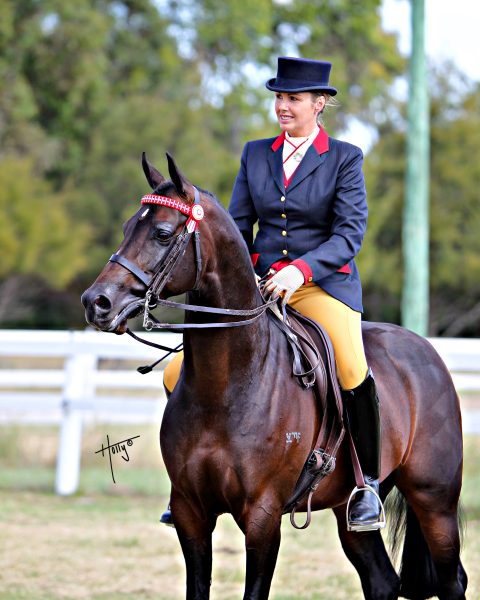
Concherto FF (Burren-Dah The Wizard x Aloha Symphony). Credit Holly.
TABM: Do you think that breeders are a dying breed, pardon the pun?
Doyle: I think that the days of many large breeders with big programmes might be shifting as the world keeps moving away from the need for horses and heads towards the want. I see no problems in having small boutique breeders as long as they have specific goals and produce their style of horse. If we all breed the exact same way, we end up with a limited gene pool worldwide.
TABM: Do you think that breeders and dedicated breeding programmes still have a place in the world today?
Doyle: I think this has already been answered above. Of course we need great breeders with a future vision, otherwise we will be our own worst enemy. We could breed ourselves into a hole that we just can’t breed out off.
TABM: Over the years, what have been your key successes, perhaps the ones that define your farm?
Doyle: It is back to our ‘keep it simple with our breeding’ goals – to breed beautiful, functional, well-mannered horses that can do multiple things.
TABM: And finally, what is next for you and your breeding programme?
Doyle: Next for us is to find the right cross for our young fillies that we have not even bred yet. Right now, we have the strongest mare band that we have ever had with young fillies by CraveFF, his half-brother Sir Charmed FF (SF Sir Real x Bremervale Charmed), SF Sir Real (Sir Fames HBV x Veronica GA) and Spades LRA (DA Valentino x Serenata El Jamaal).
Future achievements would be to keep producing horses that others want to include into their own programmes, and having our horses being competitive in multiple divisions.
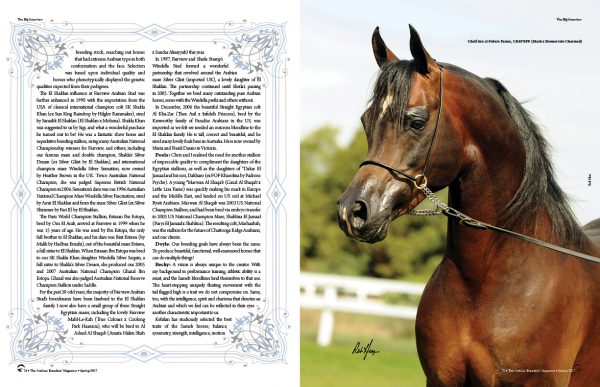
First printed in The Arabian Breeders’ Magazine Volume I Issue III March 2017. To enjoy further content such as this, please visit The Arabian Magazine Shop.
